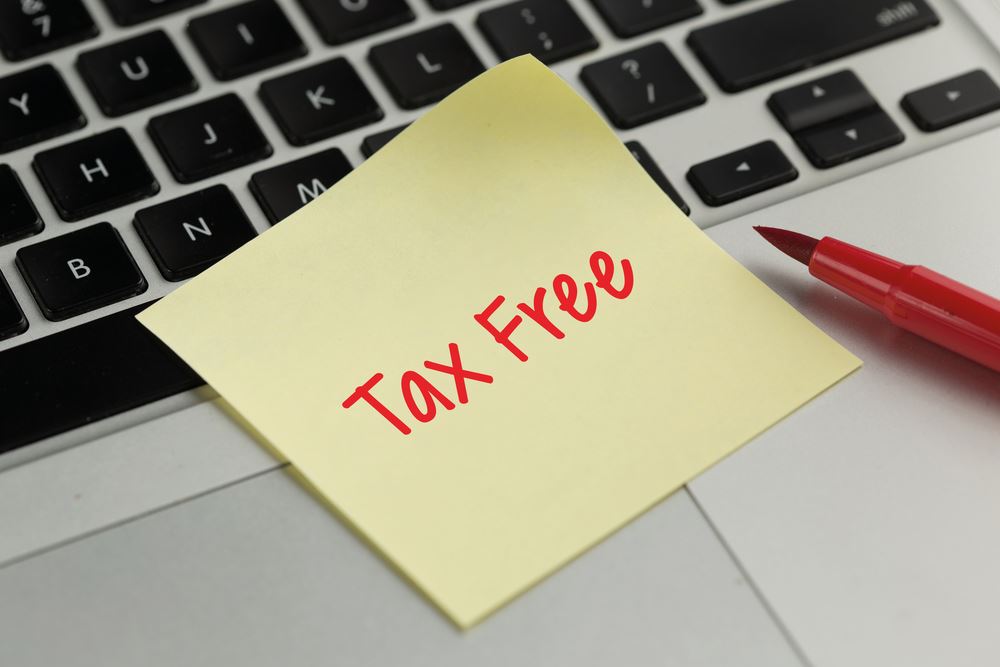Executive Summary
Companies can make “qualified disaster relief” payments under Section 139 that is deductible to the company, not subject to FICA taxes, and tax-free to the employee. This presents a tax-saving opportunity for companies across the U.S.
Background
Gross income does not include any amount received by an individual as a qualified disaster relief payment.[1] A qualified disaster relief payment is any amount paid to or for the benefit of an individual:
(1) to reimburse or pay reasonable and necessary personal, family, living, or funeral expenses incurred as a result of a qualified disaster;
(2) to reimburse or pay reasonable and necessary expenses incurred for the repair or rehabilitation of a personal residence or repair or replacement of its contents to the extent that the need for such repair, rehabilitation, or replacement is attributable to a qualified disaster;
(3) by a person engaged in the furnishing or sale of transportation as a common carrier by reason of the death or personal physical injuries incurred as a result of a qualified disaster; or
(4) if such amount is paid by a Federal, State, or local government, or agency or instrumentality thereof, in connection with a qualified disaster in order to promote the general welfare, but only to the extent any expense compensated by such payment is not otherwise compensated for by insurance or otherwise.[2]
Exclusion requires that the event leading to the payment be a “qualified disaster.” This term means: a disaster which results from a terroristic or military action (as defined in Section 692(c)(2)); a federally declared disaster (as defined by Section 165(h)(3)(C)(i)); a disaster which results from an accident involving a common carrier, or from any other event, which is determined by the Service to be of a catastrophic nature, or with respect to amounts described under (4), above, a disaster which is determined by an applicable Federal, State, or local authority to warrant assistance from the Federal, State, or local government or agency or instrumentality thereof.[3]
The Service has issued guidance on these payments, stating generally that amounts paid to an individual by a state agency, a charity, or an employer to reimburse the individual for certain expenses the individual incurs as a result of a federally declared disaster are excluded from the individual’s gross income under the administrative general welfare exclusion, Section 102 (gifts) and Section 139, respectively. Specifically, payments individuals receive under a state’s program to pay or reimburse unreimbursed reasonable and necessary medical, temporary housing, or transportation expenses they incur as a result of a flood are excluded from gross income under the general welfare exclusion. Such payments also qualify for exclusion under Section 139. Further, payments that individuals receive under a charitable organization’s program to pay or reimburse unreimbursed medical, temporary housing, or transportation expenses they incur as a result of a flood are gifts excluded from gross income under Section 102. Finally, payments that employees receive under an employer’s program to pay or reimburse unreimbursed reasonable and necessary medical, temporary housing, or transportation expenses they incur as a result of a flood are excluded from gross income under Section 139.[4] Grants received by businesses (including sole proprietorships) under a state program to reimburse losses that the business incurred for damage or destruction of real and personal property may elect to defer including in income gain realized from receipt of the grant under the involuntary conversion provisions of Section 1033 to the extent the grant proceeds (or other funds in lieu of the grant proceeds) are used to timely purchase property similar or related in service or use to the destroyed or damaged property; businesses may not use Section 139 for such grants.[5]
Disaster Mitigation Payments. Gross income does not include any amount received as a qualified disaster mitigation payment.[6] A qualified disaster mitigation payment is any amount which is paid pursuant to the Robert T. Stafford Disaster Relief and Emergency Assistance Act or the National Flood Insurance Act to or for the benefit of the owner of any property for hazard mitigation with respect to such property.[7] Grants provided to homeowners under a program to reinforce their homes’ foundations to better withstand earthquakes were not excludible from income because they were not paid pursuant to the Robert T. Stafford Disaster Relief and Emergency Assistance Act or the National Flood Insurance Act.[8]
Substantiation. As under I.R.C. § 139, the Service will not require individuals to account for actual disaster-related expenses for governmental payments to qualify under the administrative general welfare exclusion if the amount of the payments is reasonably expected to be commensurate with the expenses incurred.[9]
Disasters
FEMA’s website provides a list of disaster areas at https://www.fema.gov/disasters.
Considerations for Companies Providing Pandemic Qualified Disaster Payments
Although Section 139 of the Code does not require employers to adopt a written plan or policy to make qualified disaster payments, employers who desire to make qualified disaster payments on account of COVID-19 should consider, as a best practice, establishing a written plan or policy. Such plan or policy would communicate, at minimum, the following information to employees: (1) who is eligible for such payments; (2) what expenses will be reimbursed or paid and whether there are limits on the amount of reimbursements or payments; (3) whether employees must provide receipts or other proof of their expenses to the employer to be eligible for payments; and (4) how and at what time payments are made.
Section 139 does not require receipts or other proof of expenses incurred by employees and the IRS previously issued guidance clarifying that individuals are not required to account for actual expenses to qualify for the Section 139 exclusion, provided that that the amount of payments can be reasonably expected to be commensurate with the expenses incurred. However, employers should consider whether they wish to do so in order to control costs or to avoid fraudulent claims from employees. Absent such concerns, a carefully designed plan or policy (e.g., with specified types of expenses reasonably expected to be incurred and related limits), combined with a certification by the applicant that they have in fact incurred such expenses, may be sufficient to mitigate any risks to employers of not requiring employees to submit supporting documentation.
Although the IRS has not issued guidance specific to COVID-19 as to the types of expenses that may qualify under Section 139, listed below are some examples of the types of expenses (to the extent reasonable and necessary) that an employer could consider including in a plan or policy adopted in connection with COVID-19:
- unreimbursed COVID-19 medical expenses (e.g., copays incurred for COVID-19 treatment or over-the-counter medications used to treat COVID-19);
- work-from-home expenses (e.g., costs to create home office, such as purchasing a printer or home phone; increased utility costs on account of the home office; cost of new or expanded internet access);
- dependent care expenses (e.g., increased child care or tutoring costs due to school closings; remote learning or home schooling expenses, such as home internet, computer for use by a dependent, educational materials, subscriptions to online educational resources, etc.);
- increased transportation expenses (e.g., increased commuting costs from lack of access to public transportation);
- funeral expenses (e.g., expenses attributed to the funeral of an employee, his or her spouse or dependent, who dies from a COVID-19 infection); and
- other living expenses on account of an employee’s known exposure to COVID-19 (e.g., cleaning products to sanitize home, etc.).
Additional Considerations
Employers interested in adopting a COVID-19 disaster relief program also should consider other aspects of implementing such a program, including but not limited to (i) administrative complexity at a time when staffing may be decreased or remote, (ii) costs given the potential for widespread participation in the program by employees, (iii) privacy considerations, particularly if documentation is requested by the sponsoring employer, and (iv) tax consequences under state and other non-federal laws.

Contact Our Firm
Contact our firm today to schedule a free consultation by clicking here to submit your information online and be contacted by our firm.
Bluebook Citation: Section 139 Pandemic Disaster Relief Payments, Int’l Tax Online Law Journal (June 25, 2020) url.
[1] IRC § 139, added by The Victims of Terrorism Tax Relief Act of 2001, Pub. L. No. 107-134, applicable to tax years ending on or after September 11, 2001. As part of a package of relief for victims of certain natural disasters, taxpayers who provide housing to disaster victims for at least 60 consecutive days may be entitled to an income reduction. Income may be reduced by $500 for each victim displaced by a covered disaster; the maximum reduction per disaster is $2,000 for unmarried individuals and $2,000 for joint filers (separate filers may allocate the total between their returns in $500 increments). The limitations on the reduction apply separately to each disaster area. For example, a taxpayer may reduce taxable income by up to $2,000 for providing housing to Midwestern disaster displaced individuals even though the taxpayer reduced taxable income for providing housing to one or more Hurricane Katrina displaced individuals. No reduction of taxable income is allowed for a displaced individual who is the spouse or a dependent of the taxpayer. No reduction is permitted if the taxpayer receives rent or other compensation from any source for providing the housing. No reduction is permitted unless the displaced individual’s tax identification number is provided on the taxpayer’s return. Reg. § 1.9300-1.
[2] IRC § 139(b).
[3] IRC § 139(c). The Service may also issue guidance on relief payments that are not qualified disaster payments. See e.g., Ann 2016-25, 2016-31 I.R.B. 205, in which the Service stated that certain California residents affected by a gas leak could exclude court-ordered payments under a relocation plan. The Service will not assert that amounts paid either on behalf of or to the residents pursuant to the relocation plan are includible in gross income. However, family and friends who received payments under the relocation plan must include these payments in gross income, unless these amounts are properly excludable from gross income under I.R.C. § 280A(g) (relating to the exclusion for rental income from a taxpayer’s residence for less than 15 days during the tax year).
[4] Rev. Rul. 2003-12, 2003-1 C.B. 283 (modified in part, IRS Notice 2007-22, 2007 WL 474077). Amounts that are excluded from gross income under this revenue ruling are not subject to information reporting under I.R.C. § 6041. See Publication 3833, Disaster Relief: Providing Assistance Through Charitable Organizations.
[5] Rev. Rul. 2005-46, 2005-30 I.R.B. 120.
[6] IRC § 139(g)(1).
[7] IRC § 139(g)(2).
[8] PLR 201815005.
[9] Rev. Rul. 2003-12, 2003-1 C.B. 283 (modified in part, Notice 2007-22).


